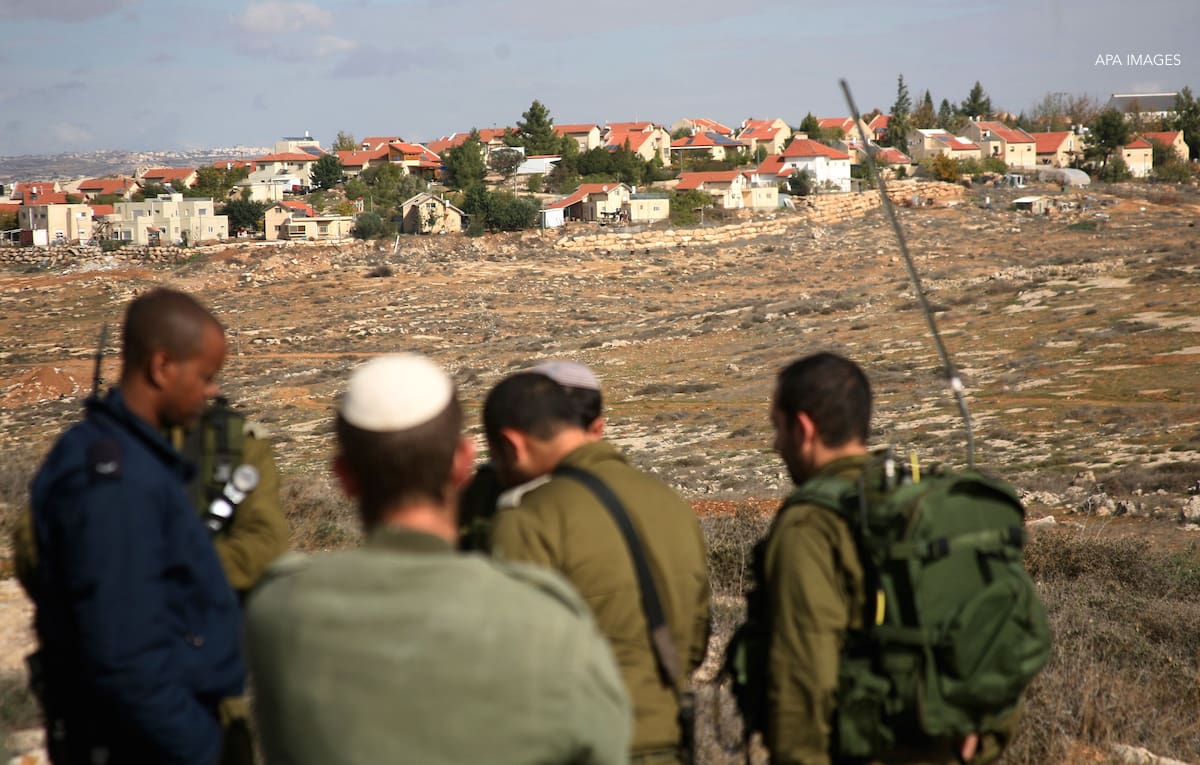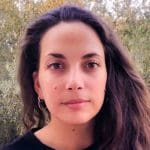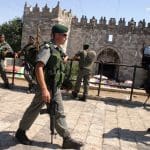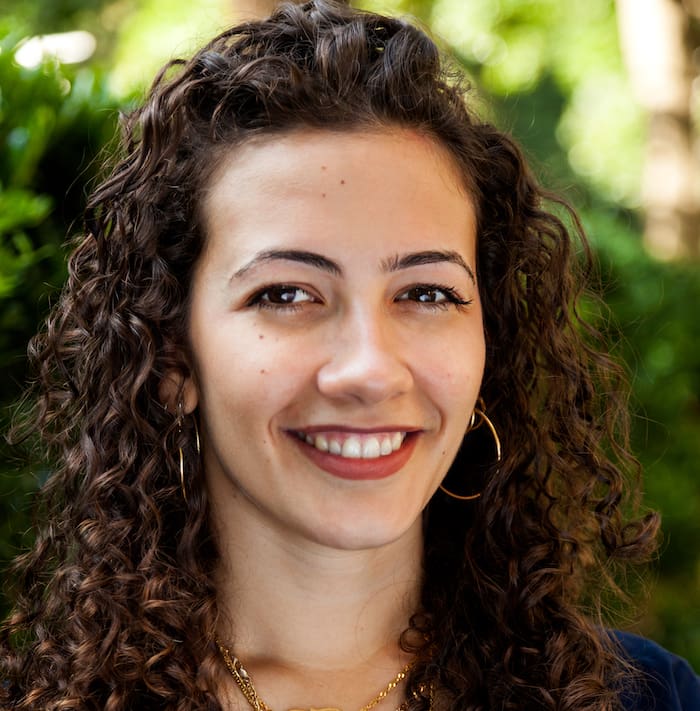
Executive Summary
In recent months, Israel has made a series of relentless attempts to annex settlements bordering Jerusalem. Buoyed by Donald Trump’s recognition of Jerusalem as Israel’s capital, the Benjamin Netanyahu government has brazenly presented a slew of plans, resolutions, and bills toward this goal. Israeli politicians, administrators, and planners have also approved thousands of housing units to be built in settlements both in and around Jerusalem and deep in the Occupied Palestinian Territory (OPT). Securing a demographic majority and expanding the settlements are part of a larger Israeli scheme to annex the West Bank.
Since 1967, Israel has limited Palestinian power, ownership, and habitation in the Jerusalem area while at the same time increasing Jewish-Israeli presence and control. While Jerusalem remains the only officially annexed Palestinian territory since 1967, the nationalist right wing in Israel has long advocated for the full annexation of the OPT.
The Greater Jerusalem bill of 2017 sought to annex a settlement cluster between Jerusalem and Hebron. If the bill, or any variant of it, were to be implemented it would have two momentous consequences: It would sever Palestinians from their capital, Jerusalem, “Judaizing” the city demographically and spatially, and would colonize the narrowest point of the West Bank, making a contiguous Palestinian state impossible.
Fundamental to both these outcomes is the proposed annexation of the city-settlement of Ma’ale Adumim and the strip of land that connects it to Jerusalem, known as the E1 corridor. The contested annexation of the E1 corridor seeks to formally bring Ma’ale Adumim into the fold of Jerusalem. It would also displace Bedouin communities who have lived in the corridor for generations. The majority of Bedouins would be relocated to three townships, forcing a lifestyle on them that is anathema to their nomadic existence.
Moreover, preparations for annexing the West Bank are already underway, as demonstrated by a non-binding resolution passed unanimously on January 1, 2018, by the Likud Central Committee. The resolution demands that Netanyahu, party leaders, and politicians “apply the laws of Israel and its sovereignty to all liberated areas of Jewish settlement in Judea and Samaria” – the name used by religious nationalists in reference to the West Bank.
Recommendations
- Nations other than the US as well as international bodies must apply pressure on the Israeli government to ensure any annexation bill is costly. Palestinian civil society and the Palestine solidarity movement must go further in raising awareness of how close the Israeli settlement project is to the point of no return in their current and planned campaigns with policymakers.
- The EU should move beyond platitudes of condemnation when its humanitarian assistance to vulnerable communities is confiscated or destroyed. It should actively hold Israel to account with diplomatic pressure, such as the recognition of Palestinian statehood. Simultaneously, the Palestine solidarity movement should identify ways to apply pressure on the EU, urging it to abide by its own regulations and its obligations under international law.
- The Palestinian Authority (PA) should make it clear that the implementation of any annexation bill would constitute a red line that, if crossed, would terminate all cooperation between the PA and Israel. An organized grassroots movement would both pressure the PA and strengthen its hand.
- The PA should create its own spatial vision of the area between Jerusalem and Ma’ale Adumim, supported by facts stressing the importance of the area to the viability of a future Palestinian state.
Overview
In recent months, Israel has made a series of relentless attempts to annex settlements bordering Jerusalem. The most ambitious: The Greater Jerusalem bill, which sought to annex Ma’ale Adumim, Givat Zeev, Beitar Illit, and the Etzion bloc – a settlement cluster between Jerusalem and Hebron –and which was scheduled for approval by the Israeli Ministerial Committee for Legislation at the end of October 2017.1 Its ultimate aim was to “Judaize” Jerusalem through demographic gerrymandering and territorial expansion.2
While Netanyahu delayed the bill indefinitely due to pressure from the United States, which was concerned that it would hinder efforts to resurrect peace talks, the intent behind it lives on in other measures. In the wake of US President Donald Trump’s recognition of Jerusalem as Israel’s capital in December 2017, Israel has ramped up efforts to annex the land and change the demographic makeup of Jerusalem.
The current Benjamin Netanyahu government has brazenly presented a slew of other plans, resolutions, and bills that would tighten Israel’s grip on Jerusalem. Buoyed by Trump’s green light, Israeli politicians, administrators, and planners have also approved thousands of housing units to be built in settlements both in and around Jerusalem and deep in the OPT, despite the fact that the establishment of settlements in the Occupied Palestinian Territory (OPT) is a violation of Article 49 of the Fourth Geneva Convention. Securing a demographic majority and expanding the settlements are also part of a larger Israeli scheme to annex the West Bank.
This policy brief explores the implications of annexation in the Jerusalem area, specifically the impact of the annexation of the city-settlement of Ma’ale Adumim and the parcel of land known as E1, which connects it to Jerusalem. It shows how the annexation of these spaces would preclude a future Palestinian state by effectively cutting off the northern and southern West Bank from each other. Such annexation also illustrates Israel’s methods of colonization throughout the OPT: land confiscation, creeping annexation, demographic manipulation, and population transfer. The brief concludes with recommendations for what the international community, the Palestinian Authority (PA), and Palestinians themselves can do to stem this catastrophic outcome.
Annexation from the First Days of Occupation
On June 27, 1967, 20 days after the Israeli Army occupied the most eastern outreaches of Jerusalem, Israel annexed almost 71 square kilometers of land into the expanded boundaries of the Israeli municipality of Jerusalem. This connected the Old City, the western Israeli city, the formerly Jordanian-administered city, and 28 Palestinian villages (and their pastures) into a single metropolitan area – all in an effort to create a unified, “eternal” Jewish capital. The annexation included approximately 69,000 Palestinians who lived on the land.
Since 1967, Israel has limited Palestinian power, ownership, and habitation in the Jerusalem area while at the same time increasing Jewish-Israeli presence and control. While Jerusalem remains the only officially annexed Palestinian territory since 1967, the nationalist right wing in Israel has long advocated for the full annexation of the OPT.
Legislation similar to the Greater Jerusalem bill has been proposed over the years. The bill itself was a re-vamp of a similar plan from the 1990s, and Member of the Knesset (MK) Yisrael Katz presented a comparable proposal in 2007. Both were shelved due to concerns about international and Palestinian backlash.
Like previous efforts, the Greater Jerusalem bill was concerned with demographics. It stipulated that the 150,000 settlers living in the towns and councils in question be considered Jerusalem residents, thus enabling them to vote in municipal elections and sway electoral outcomes. Simultaneously, the Knesset added an amendment to the 1980 Basic Law: Jerusalem, Capital of Israel, which allows the government to separate areas of the city from the Jerusalem municipality while requiring those new administrations to remain under Israeli sovereignty. This was clearly intended to discount the 100,000 Palestinians living in the neighborhoods of Kufr Aqab, the Shuafat refugee camp, and Anata – which sit behind the Separation Wall – by reclassifying them as a sub-municipality and removing them from the census.
These measures would ensure that the Palestinian population – which currently comprises nearly 40 percent of Jerusalem’s population – would be slashed to 32 percent, simply by re-configuring the city’s borders. MK Kish stated this demographic vision quite candidly: “Jerusalem will add a population which will preserve the demographic balance.” Similarly, MK Katz stressed that the bill would “ensure a Jewish majority in the united city,” thus establishing Jerusalem as the capital of Israel.
Moreover, preparations for annexing the West Bank are already underway, as demonstrated by a non-binding resolution passed unanimously on January 1, 2018 by the Likud Central Committee. The resolution demands that Netanyahu, party leaders, and politicians “apply the laws of Israel and its sovereignty to all liberated areas of Jewish settlement in Judea and Samaria” – the name used by religious nationalists in reference to the West Bank. As former education minister and Netanyahu rival Gideon Sa’ar proclaimed: “[Annexation] is going to happen in a few years. Let us lead Likud…It is our generation’s goal to remove any question mark looming over the future of the settlements.”
The Greater Jerusalem bill is a re-vamp of a similar plan from the 1990s. Share on XWhile Netanyahu scrapped a bill based on this resolution in mid-February 2018 in response to US disapproval, its spirit is evident in an array of subtler yet equally dangerous bills submitted by Israeli lawmakers. In mid-February, for instance, the Knesset passed a bill that extends the state’s jurisdiction into the West Bank by bringing colleges and universities in settlements under the authority of the Israeli Council for Higher Education. Though its direct impact is somewhat limited, supporters of the bill have created a rhetorical and legislative environment in which the application of Israeli law in the settlements is no longer contentious – a step toward the ultimate goal of annexing swathes of the West Bank.
Most significantly, Justice Minister Ayelet Shaked (Jewish Home) introduced a bill that was endorsed by the government in early March that proposes stripping the Israeli High Court of jurisdiction over West Bank land disputes. If passed, the bill would ensure that the Jerusalem District Court instead of the Israeli High Court would hear cases involving Palestinians seeking legal recourse in land disputes with settlers. This is a precedent-setting step that would effectively impose Israeli law on the occupied West Bank.
The intention of this bill is twofold: First, by giving an Israeli domestic court jurisdiction over non-citizen Palestinians living beyond the Green Line, Shaked seeks to (further) extend Israel’s domestic law and legal structures into the West Bank. Second, it would give settlers even more of an advantage in court over Palestinian plaintiffs. According to a Justice Ministry official, Shaked regards the Israeli High Court as being “overly concerned with international law and with protecting the rights of the ‘occupied’ population in Judea and Samaria.”
Such attitudes are being given an international platform. At a side event during the AIPAC conference in Washington, DC, in March 2018, Oded Ravivi, the council head of the Efrat settlement, urged American lawmakers to support the annexation of the West Bank and an increase in settlement building. He argued, “It’s no secret that in the Knesset there have been different attempts regarding annexation or adopting Israeli law in Judea and Samaria…I think the time has come to apply Israeli law in Judea and Samaria.”
Thus, while the building (or expansion) of illegal settlements and annexation efforts have been relentlessly pursued since 1967, it is clear that Palestine is facing an existential moment. If the Greater Jerusalem bill, or any variant of it, were to be implemented it would have two momentous consequences: It would sever Palestinians from their capital, Jerusalem, Judaizing the city demographically and spatially, and would colonize the narrowest point of the West Bank, making a contiguous Palestinian state impossible.
Fundamental to both of these outcomes is the proposed annexation of the city-settlement of Ma’ale Adumim and the strip of land that connects it to Jerusalem, known as the E1 corridor. Demographically, the inclusion of Ma’ale Adumim in Jerusalem would drastically increase the number of Jewish-Israeli residents in the city, and, spatially, the annexation of the E1 corridor would be the final nail in the coffin of the two-state solution.
Ma’ale Adumim: The Jewel in the Crown of Colonization
Ma’ale Adumim is located next to Jericho in the OPT and functions as a Jewish suburb of Jerusalem, boasting a population of 40,000. The exact “founding” of Ma’ale Adumim is uncertain. It began as an outpost of 15 ideological settlers in 1975 and received city status in 1991 – the first to do so in the West Bank.
The first Menachem Begin government (1977-81) planned and designed the town. The boundaries, set in 1979, covered around 3,500 hectares with 2,600 dwelling units. Contrary to the popular claim that lands between Jericho to Jerusalem were “inherited” from the Jordanians and therefore “state lands,” Ma’ale Adumim was built on lands belonging to the Palestinian villagers of Abu Dis, Anata, Azariya, At-Tur and Isawiya. Moreover, the Jahalin, the Bedouin tribe who had previously inhabited Ma’ale Adumim’s hills, were forcibly relocated to an adjacent rubbish dump after the demolition of their tent encampments. The settlement was expanded by another 1,300 hectares that Israel declared “state land” during the 1980s and 1990s. This resulted in another forcible expulsion of the Jahalin in 1997 and 1998, evicting over 100 families.
Ma’ale Adumim was intended to achieve two overarching goals: to strategically penetrate the OPT and to consolidate Israel’s grip on Jerusalem. In the case of the former, the location of Ma’ale Adumim was explicitly chosen: The settlement’s lead architect and planner, Thomas Leitersdorf, said that its placement in the central West Bank was “without doubt, political…[and] accurately specified – the furthest place from Israel that was conceivably possible.”
In an effort to create concrete “facts on the ground,” Ma’ale Adumim was given all required resources and developed at lightning speed. In a three-year period, Israeli planners built a city comprised of thousands of identical apartments. Such rigid planning, where each house is a facsimile of the next, is, in the words of Dana Eraket, “the epitome of settler colonialism. It is colonial hegemony” – at odds with the organic development of the surrounding Palestinian landscape.
The Israeli government sought to increase the number of Jewish-Israelis in and around the city, including by subsidizing the settlement and incentivizing their citizens to relocate. The prime objective was to support the migration of young, middle class couples by offering them better quality housing close to Jerusalem at a significantly lower cost. These non-ideological settlers are driven by a desire for an improved quality of life. Today, the settlement’s demographic split falls around 75 percent secular and 25 percent religious.3
Since 1975, Ma’ale Adumim has evolved into a metropolis, complete with a library, theater, industrial park, malls, 15 schools, and 78 kindergartens. Around 70 percent of residents commute to Jerusalem for work, barely noticing the transition across occupied territory.
Ma’ale Adumim, along with neighboring settlements that have sprung up around it, form a sweeping built-up area that interpose the Palestinian landscape and isolate Palestinians from their capital and from each other. It is the jewel in the crown of the Israel settlement project.
The Devastating Effects of Annexing E1
Any annexation of Ma’ale Adumim and other parts of the West Bank would depend on the acquisition of a strategically significant parcel of land known as E1. The E1 corridor measures approximately 12 square kilometers and is located within Israel-controlled Area C between Jerusalem and Ma’ale Adumim. Israel’s primary objective in acquiring E1 is to secure Ma’ale Adumim’s territorial contiguity with Israel by creating an urban Jewish block between Ma’ale Adumim and Jerusalem. This would bolster Israel’s grip on East Jerusalem by dwarfing its Palestinian districts with Jewish neighborhoods while making the two-state model even less viable.
MK Naftali Bennett (Jewish Home), the right-wing education minister, has spoken about annexing Ma’ale Adumim and E1. In preparation for the introduction of an annexation bill, he declared in 2017 that “clearly it’s time for a quantum change…The incremental approach has not worked. We have to understand it’s a new reality. We have to go big, bold, and fast.” This “new reality” is a first step toward full annexation of the West Bank.
Ma’ale Adumim was intended to penetrate the OPT and to consolidate Israel’s grip on Jerusalem Share on XE1 is not merely a land corridor, but is also intended for settlement. Prime Minister Yitzhak Rabin (1992-95) expanded the borders of Ma’ale Adumim to bring E1 under its jurisdiction – covering approximately 4,800 hectares – and every Israeli prime minister since Rabin has attempted to build urban blocks in the area. The E1 Master Plan (Plan No. 420/4) received approval in 1999 and is split into separate detailed plans, covering approximately 1,200 hectares of land, the majority of which Israel has declared “state land.” To date, a water reservoir, industrial zone, and police station have been presented for public review and constructed. Additionally, much of the supplementary infrastructure has already been put in place, including paved roads, supporting walls, traffic roundabouts, and street lighting, totaling over $5.5 million.
Such infrastructure is in preparation for a new Israeli settlement called Mevaseret Adumim that would include 3,500 housing units in its residential area. Ostensibly intended to alleviate Ma’ale Adumim’s housing shortage and offer regional services and commercial and tourism facilities, it would ultimately increase the Jewish population in the Jerusalem area. Mevaseret Adumim has become a rallying cry for the right wing in Israel. Netanyahu has repeatedly pledged to build it – under pressure from both right-wing groups and the veteran mayor of Ma’ale Adumim, Benny Kasriel.
The effect of annexation and/or settlement in the E1 corridor would be devastating. First, it would create a “salient jutting” halfway across the West Bank’s narrowest point (28 kilometers from east to west). This would sever the route between Ramallah and Bethlehem, disrupt the territorial contiguity between the northern and southern West Bank, and ultimately end hopes of a two-state model.
Second, it would further isolate Jerusalemite Palestinians and separate West Bank Palestinians from Jerusalem. For many Palestinians in the OPT, Jerusalem is their economic and cultural center. The building of the Separation Wall through parts of the West Bank and around the ring of existing settlements have already denied Palestinians access to Jerusalem. Palestinians with West Bank IDs can no longer do business, study, receive medical care, or visit friends and family without permission from the Israeli security apparatus.
Moreover, the religious significance of such annexation should not be overlooked. Jerusalem is home to many of the most sacred religious sites for Muslim and Christian Palestinians, including the Noble Sanctuary (home of the Al-Aqsa Mosque) and the Church of the Holy Sepulchre. Annexation would only exacerbate the religious restrictions imposed on Palestinians who are denied the right to worship freely at the holy sites.
Further, E1 is peppered with enclaves of approximately 77.5 hectares of privately-owned Palestinian land. Since Israel has been unable to declare them “state land,” they are not officially included in the annexation or settlements plans. Any settlement construction in E1 would invariably surround them with built-up Jewish-Israeli areas, limiting the ability of Palestinian landowners to access and cultivate their farmland.
This would affect local infrastructure. For instance, the roads currently used by Palestinians would, as with other settlements, become local roads for settler use and Palestinian access would be denied. A report by Israeli NGO B’Tselem states that if no alternate roads were to be built, the access ban would considerably reduce Palestinian freedom of movement in the already diminished area.
Recognizing the spatial, political, and diplomatic consequences of severing the West Bank in half, Israel is building the “Eastern Ring Road” near Jerusalem. Dubbed the Apartheid Road because of the wall that runs down its middle separating Israeli and Palestinian motorists, it is intended to facilitate Palestinian travel between the north and south West Bank to ensure “transportational contiguity.” Yet it is also meant to better connect Israeli settlements to Jerusalem while preventing Palestinian motorists from accessing Jerusalem. The implications of the road are devastating to Palestinians’ freedom of movement and their potential future state.
In sum, the contested annexation of the E1 corridor seeks to formally bring Ma’ale Adumim into the fold of Jerusalem, severing the land diagonally and also cutting Palestinians off from Jerusalem – their intended capital. It would also displace Palestinian communities who have lived there for generations.
Population Transfer
Implementation of the annexation/settlement proposals for E1 would require the immediate expulsion of the Bedouins living on the land, a violation of international law. At present, there are approximately 2,700 Bedouins, half of whom are children, in the Ma’ale Adumim vicinity. The majority of these communities come from the Jahalin tribe.
Despite the Bedouins having lived since the 1950s on the land – land that Israel allocated them after their expulsion from the Tel Arad area in the Negev – the Civil Administration (which handles activities in the OPT) dictates that they have no recourse to construction that Israel deems “legal.” The Israeli authorities have also deliberately deprived the Jahalin of access to basic services, such as water and electricity, to make their life on the land intolerable. They are not allowed to work or build on the land. Moreover, the Israeli military limits them from accessing their allotted land for grazing their flocks, forcing them to depend on purchasing costly fodder for sheep. Herders have been obliged to sell their livestock, with the result that only 30 percent of residents continue to earn a living from raising livestock. The rest work as laborers, including in the nearby settlements.
External attempts at ameliorating the Bedouins’ situation have been thwarted. In March 2017, Israel issued 42 demolition orders against the impoverished village of Khan al-Ahmar in E1, angering the European Union, which had funded many of the village’s buildings, including a school that serves more than 150 children between the ages of six and fifteen – some from neighboring communities.4 As of September 2017, Khan al-Ahmar is home to 21 families numbering 146 people, including 85 minors.
Dubbed the Apartheid Road, Israel is building the “Eastern Ring Road” near Jerusalem Share on XUnder the current E1 plans, the Jahalin are to be expelled and relocated to three townships. This forces a lifestyle onto the Bedouins that is anathema to their nomadic existence. In the context of military occupation, any transfer of “protected persons” – such as these communities – including confiscation or destruction of property by the occupying power, represents a gross breach of international law.5 By extension, any military plans intended to permanently relocate occupied people is a war crime.6 Yet despite the clear international legal framework condemning these practices, Israel’s attempt to relocate the Bedouins continues – using domestic law as a tool to obfuscate Bedouin and Palestinian claims to land.7
Recommendations
The annexation of E1 and Ma’ale Adumim would dramatically alter the geopolitical realities in Palestine-Israel. Not only would it rubber stamp Israel’s Judaization of Jerusalem, it would also cripple Palestinian future statehood laid out by the Oslo Accords. These tensions continually play out in the Knesset, US Congress, United Nations, European Union, media, and humanitarian field more broadly. The many moving parts of the Ma’ale Adumim annexation plan make it a perpetual source of discussion, disagreement, and resistance.
The international community, the PA, and Palestinian civil society can take steps to halt this flagrant violation of international law:
- Since it is evident that the Trump administration will not be the restraining force on the right-wing coalition in the Knesset, nations other than the US as well as international bodies must apply pressure on the Israeli government to ensure any annexation bill is costly. Palestinian civil society and the Palestine solidarity movement must go further in raising awareness of how close the Israeli settlement project is to the point of no return in their current and planned campaigns with policymakers.
- The EU should move beyond platitudes of condemnation when its humanitarian assistance to vulnerable communities is confiscated or destroyed. It should actively hold Israel to account with diplomatic pressure, such as the recognition of Palestinian statehood. Simultaneously, the Palestine solidarity movement should identify ways to apply pressure on the EU, urging it to abide by its own regulations and its obligations under international law.
- The PA should make it clear that the implementation of any annexation bill would constitute a red line that, if crossed, would terminate all cooperation between the PA and Israel. An organized grassroots movement would both pressure the PA and strengthen its hand.
- The PA should create its own spatial vision of the area between Jerusalem and Ma’ale Adumim, supported by facts stressing the importance of the area to the viability of a future Palestinian state. This alternative vision should be crafted by Palestinian geographers, town planners, and think tanks.
The flurry of recent bills is merely the latest example of the Israeli theft of Palestinian land and the process of Zionist colonization that has been taking place since before the establishment of the state of Israel. While it is unlikely that the realization of these recommendations would forestall Israel in its ideological mission to “Judaize” the entirety of Palestine-Israel, such moves would capitalize on the pro-Palestinian sentiment gathering momentum in the West and take Israel to task for its entrenched occupation and colonization practices.
- The bill was authored by Member of the Knesset (MK) Yoav Kish (Likud) and MK Bezalel Smotrich (Jewish Home) and supported by Transport Minister MK Yisrael Katz (Likud) and Prime Minister Benjamin Netanyahu (Likud).
- Al-Shabaka publishes all its content in both English and Arabic (see Arabic text here.) To read this piece in Spanish, please click here. Al-Shabaka is grateful for the efforts by human rights advocates to translate its pieces, but is not responsible for any change in meaning.
- Despite rural settlements outnumbering urban settlements in the West Bank by 94 to 50, the number of Israeli settlers living in urban settlements is close to 477,000, over eight times that of Israeli settlers in the rural settlements at around 60,000.
- The EU urged Israel “to accelerate approvals of Palestinian master plans, halt forced transfers of population and demolitions of Palestinian housing and infrastructure, simplify administrative procedures to obtain building permits, ensure access to water, and address humanitarian needs.”
- International humanitarian law prohibits forcible transfer unless it is for residents’ safety or for an urgent military need.
- International Criminal Court Rome Statute 6(e) states that forced population transfer includes “threat of force or coercion, such as that caused by fear of violence, duress, detention, psychological oppression or abuse of power against such person or persons or another person, or by taking advantage of a coercive environment.”
- This tactic of population transfer is mirrored within the Green Line. Bedouins living in the so-called “unrecognized villages” in the Naqab/Negev desert are perennially at risk of “resettlement.” Most recently, Israeli authorities announced the expulsion of the residents of the Bedouin town of Umm Al-Hiran to make way for a Jewish town called Hiran.










